Liege Waffles (Traditional Belgian Waffle Recipe) – a Day Trip to Bruges!
Liege waffles are so much different than America’s version of Belgian Waffles. Learn the difference, and taste traditional, authentic Belgian Liege waffles with their heavenly bits of caramelized Belgian pearl sugar and you’ll never look back!
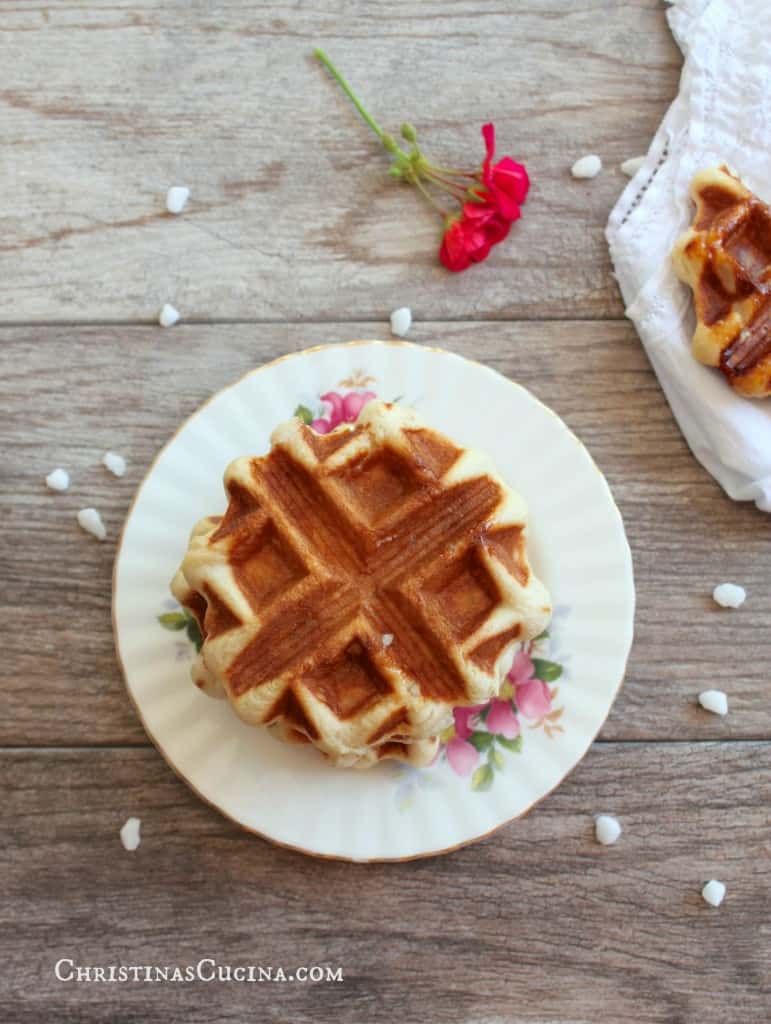
These Liege waffles are super lekker!
Oh, I’m sorry, you don’t speak Dutch?
Neither do I, but I learned the term “super lekker” from my cousin’s four year old daughter when I was visiting in Belgium last month.
As an Amazon Associate I earn from qualifying purchases.
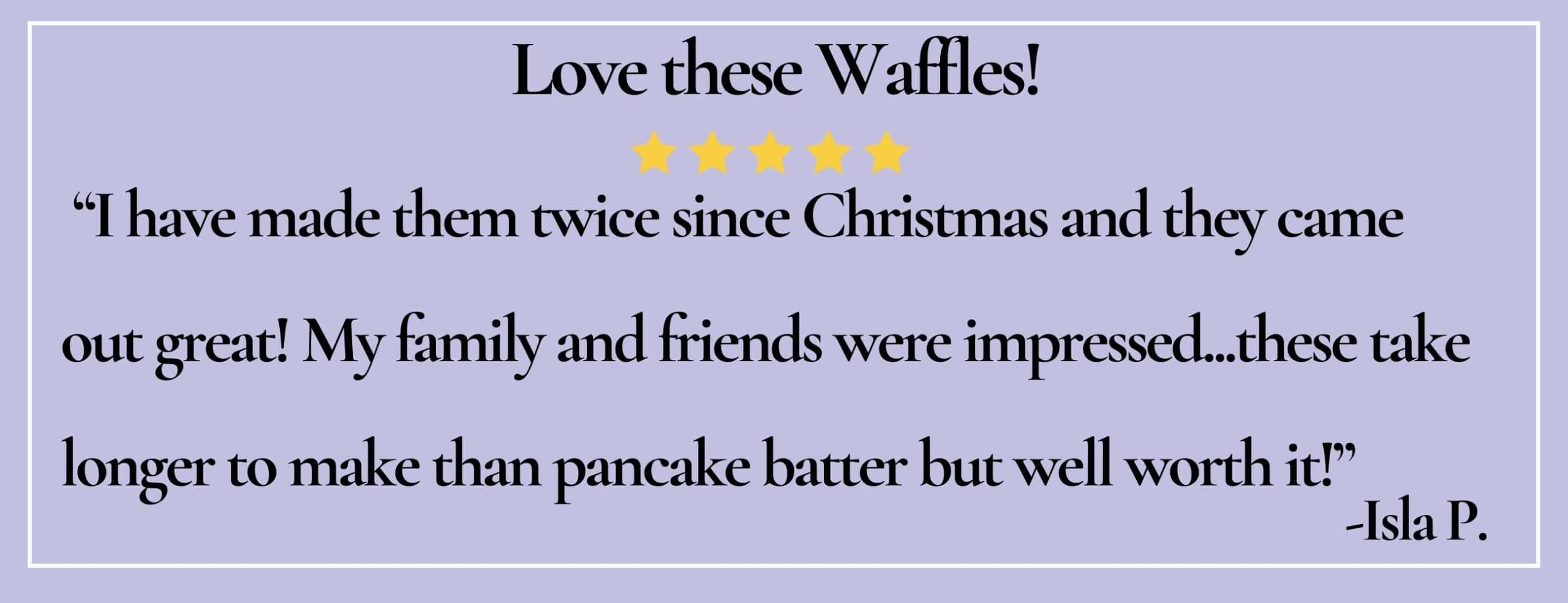
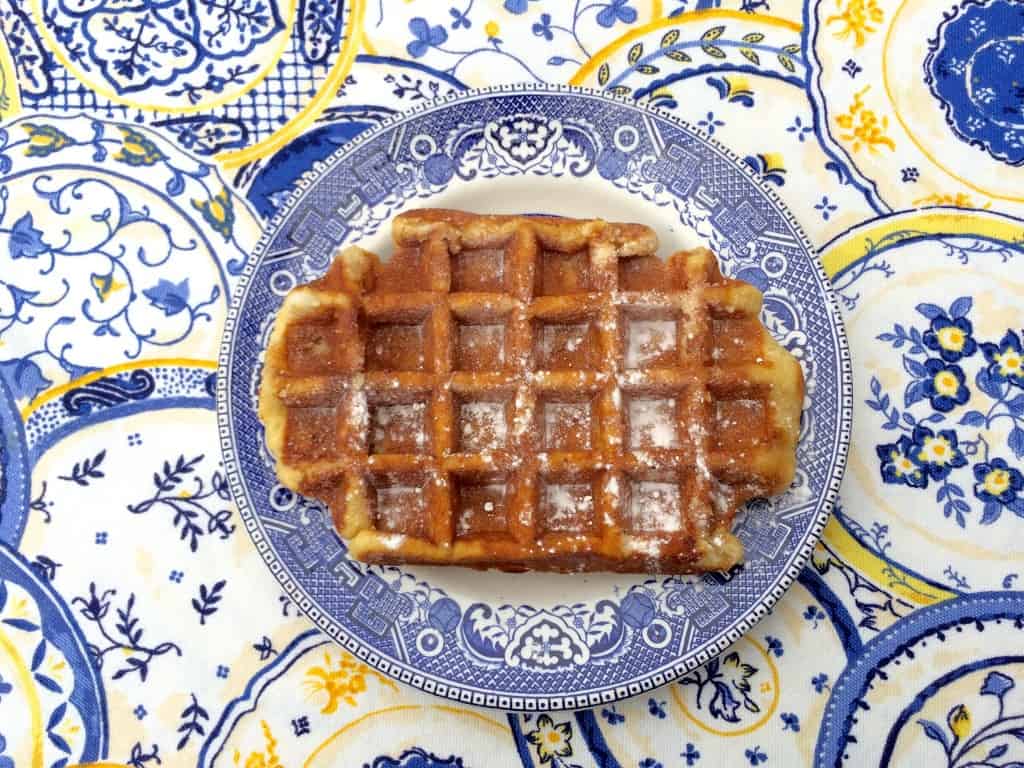
“Super lekker” translates to “super tasty” in English, and that’s exactly how to describe these authentic Liege waffles!
What is the Difference Between US Belgian Waffles and Authentic LiegeWaffles?
First of all, if you’re like me, you probably think these are sort of like our American breakfast waffles, right? Well, I was so far off base on this: you can’t imagine what a difference there is between the two, so let me explain the differences. Belgium has a few different types of waffles, but mainly Liege and Brussels waffles (made with yeast, and lighter than the Liege-style).
- Authentic Liege waffles are not made with a batter, but a yeast dough.
- Authentic Liege waffles have a completely different texture than American Belgian waffles.
- Instead of eating them with a knife and fork, authentic Belgian waffles (from both Liege and Brussels) are usually eaten handheld.
- Authentic Liege waffles are not solely for breakfast and are often eaten without a topping or sauce.
- One of the biggest differences is that Liege waffles have pieces of caramelized pearl sugar in them!
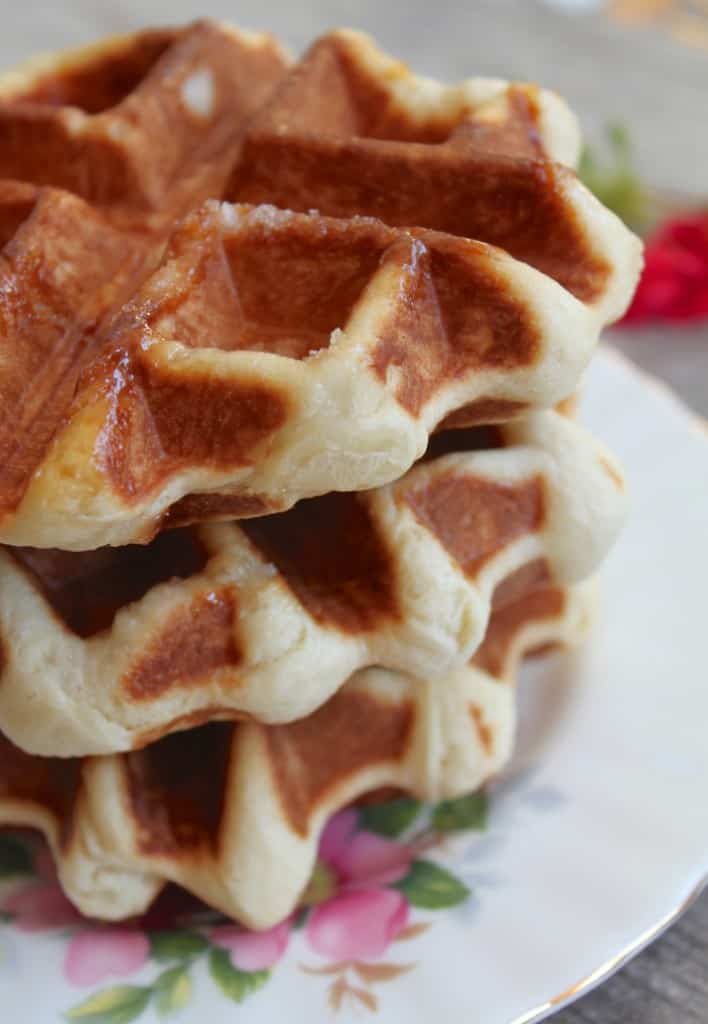
It’s not a surprise that as Americans we are so misled as there are a lot of “Belgian Waffle” recipes out there which do not resemble anything like the real Liege waffles and are also different than Brussels waffles. Even a very prominent and popular flour company has a recipe for “Belgian Waffles” on their site, which is made with a batter. They should probably be called American-Belgian waffles. Now you know the difference, and the recipe I will be sharing with you is for the real thing: an authentic, traditional Liege-style Belgian waffle.
Visiting Bruges and Discovering Liege Waffles
When I went to Bruges last month which was my next stop after leaving London on my culinary tour of Europe, I saw waffles everywhere! Here are a few shots from my day in Bruges (you can skip to the bottom for the waffle recipe).
We went to the chocolate museum, although it’s interesting, I’d say you could skip it and check out more of Bruges if you’re short on time. (There’s also a french fry museum!) However, a boat cruise on the canals is a must as you see many more sights, and from a unique perspective.
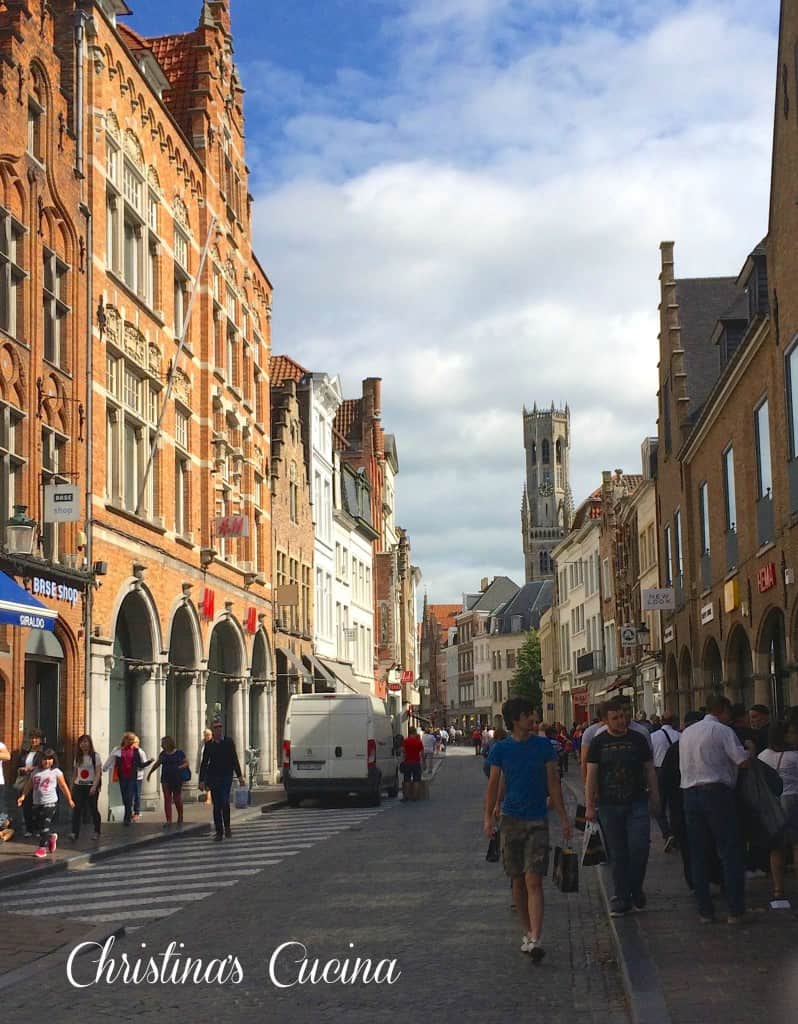
Sights around Bruges. The boy below is made entirely of chocolate.
We had pastries from a fabulous patisserie called Patisserie Academie. I will be posting about this lovely patisserie in more depth later, with another recipe (if I can manage to recreate the amazing dessert)!
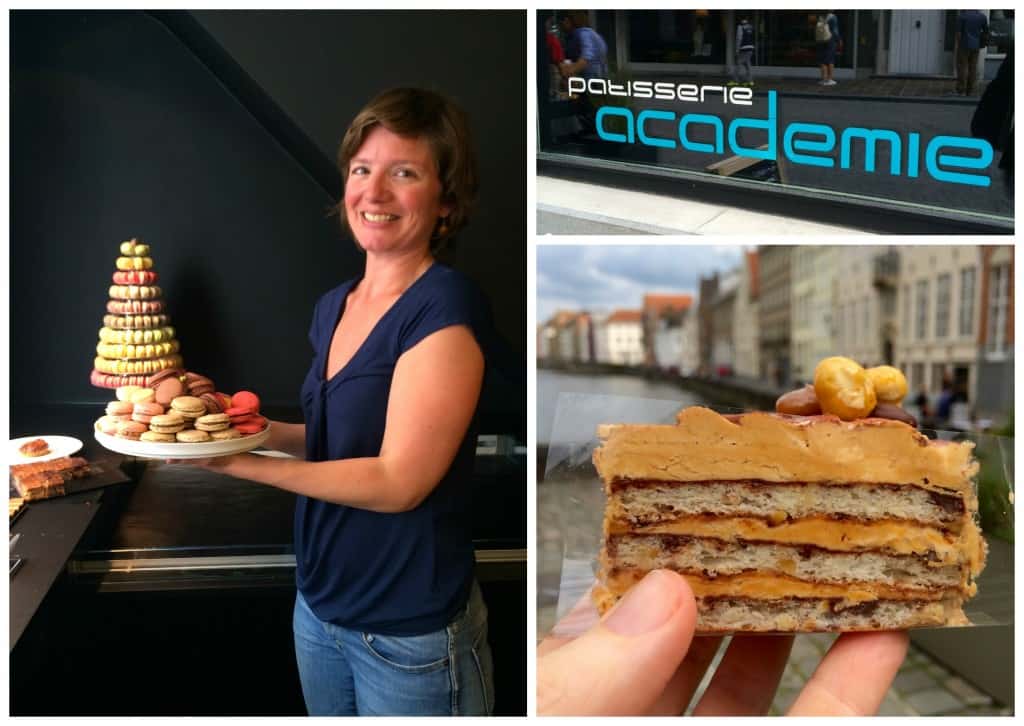
And what trip to Belgium would be complete without having some fries…
chocolates,
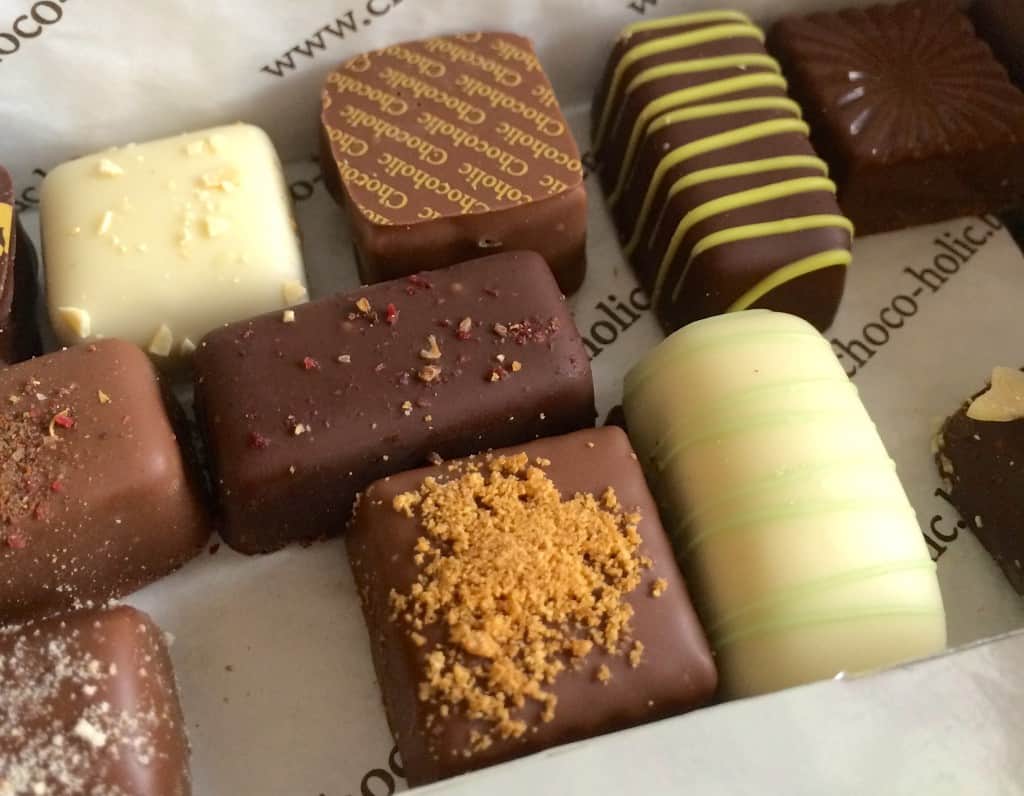
and beer!

But most of all, we cannot forget about the authentic Belgian LIEGE WAFFLES!
Authentic Belgian Waffles (Liege Waffles)
adapted from Piet Huysentruyt Nieuws
Makes 10 waffles
*unfortunately, I cannot add the amounts in cups as the exact measurements are critical to this recipe
I strongly recommend buying a kitchen scale for all baking
Ingredients
- 300 g all purpose/plain flour plus 200 g flour
- 80 g sugar
- 2 tsp dry yeast
- 150 ml water
- 2 eggs
- 15 g butter (room temperature) plus
- 175 g butter, cut into pieces (then allow to sit at room temperature)
- 140 g Belgian Pearl Sugar* (found at specialty stores or Amazon)
Special equipment: waffle iron (the one I have by Waring Pro has been discontinued
Make the Liege Waffles Dough
Place 300 grams flour plus the 80 grams of regular sugar in a mixing bowl. Set aside.
Warm the water until it is lukewarm (not at all hot) then add the yeast (do not add the yeast when the water is too hot or it will kill it and the recipe will be ruined) and whisk until it has melted.
Add the eggs and 15 g of butter to the flour and sugar mixture in the mixing bowl, then pour in the water and yeast mixture, whisking to combine all the ingredients.
Continue stirring until a sticky dough is formed.
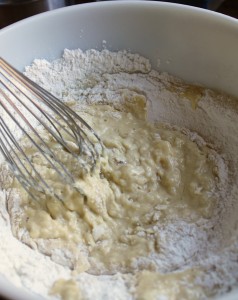
Then add the 200 grams of flour to the top, along with the 175 grams of butter pieces. Cover (without mixing anything) and allow to rest for 20 to 25 minutes.
With your hands, incorporate the butter and flour into the sticky dough until all the ingredients are well combined and the dough is no longer sticky (only add a little more flour if necessary).
Roll the Waffle Dough and Fill
Place the Liege waffle dough onto a lightly floured surface and press into a 12″ x 12″ square shape, then sprinkle with the Belgian Pearl sugar (*the original recipe lists 300 grams of sugar, but I found this to be much too much-add more or less to your liking).
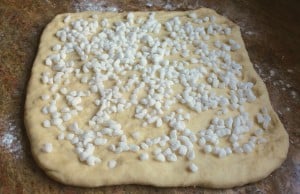
Now roll the dough from one end to the other, to form a large sausage shape.
Cut into 100 gram pieces and form into ball shapes and set aside to rest for 15 minutes, covered with a slightly damp kitchen cloth.
NOTE: You can cook these Belgian waffles in the iron now. However, I discovered that keeping the dough pieces in the fridge overnight, then bringing them to room temperature and then cooking them worked marvelously, too.
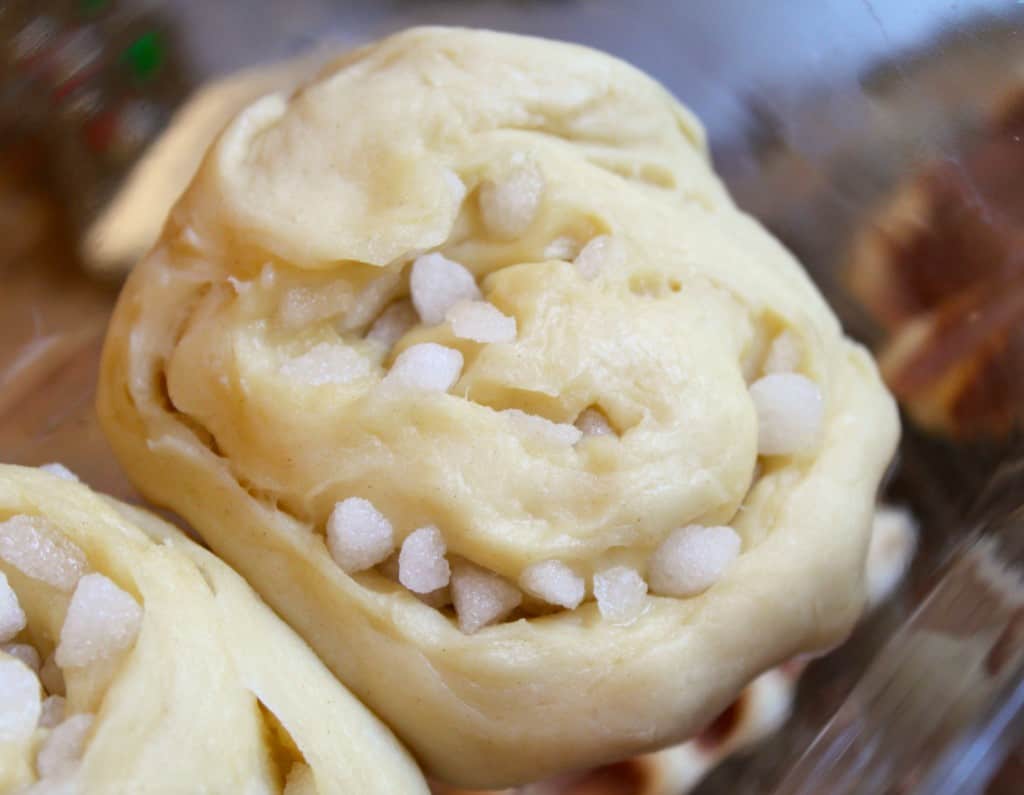
Cook the LiegeWaffles
Heat the waffle iron. This is the tricky part as all irons are different. I have a Waring Pro, now discontinued, and heated mine to the number 2 setting. The goal is to cook the waffle without making it too dry and overcooked, but caramelizing the sugar pieces at the same time. Play with the settings until you reach a result that you like. This is how the sugar looks once it’s caramelized.
Place a ball of waffle dough in the middle of the iron and cook it until it’s golden brown (I cooked mine at the number 2 setting for 4 minutes) and the sugar has caramelized. Don’t worry if it doesn’t look pretty.
Carefully remove the waffle as the caramelized sugar will definitely give you a nasty burn (I used a small flat wooden utensil, but wooden tongs would also work).
Serve as is, with a dusting of powdered sugar or melted chocolate (traditional serving ideas). Authentic Belgian waffles can be eaten the next day; just warm them a little first, or even put them in the toaster.
Remember, don’t expect these to taste like, or have the same texture as American waffles. Liege waffles are so delicious, but are difficult to describe as they are so different than what we are used to.
Overnight Waffles with Buttery Maple Nectarine Topping
This is what the inside of the authentic Belgian waffles looks like: not light and fluffy, but more dense and substantial. We’re missing the best of Belgium’s waffles if we don’t make traditional Liege waffles! Order that Belgian pearl sugar and get kneading! As Donkey says from Shrek, “We’re makin’ WAFFLES!”
The inside texture of Liege waffles, along with the bits of caramelized sugar is what makes them phenomenal!
All I know is, I’m hooked on these super lekker authentic Liege waffles! Let me know if you try them by leaving a comment below. Goede eetlust (bon appetit)!
Next stop on my culinary tour? Geneva, Switzerland!
Don’t miss another recipe or travel post; sign up for my free subscription below!

A Super Lekker, Authentic (Traditional) Belgian Waffle Recipe and a Day Trip to Bruges!
Special Equipment
- 1 kitchen scale
- 1 waffle iron
Ingredients
- 17 oz flour (divided into 300 g (10 oz) and 200 g (7 oz))
- 3 oz sugar
- 2 tsp dry yeast
- 5 oz water
- 2 eggs
- ½ oz butter room temperature
- 6 oz butter cut into pieces (then allow to sit at room temperature)
- 5 oz Belgian Pearl Sugar found at specialty stores or Amazon
Instructions
- Place 300 grams flour plus the 80 grams of regular sugar in a mixing bowl. Set aside.
- Warm the water until it is lukewarm (not at all hot) then add the yeast (do not add the yeast when the water is too hot or it will kill it and the recipe will be ruined) and whisk until it has melted.
- Add the eggs and 15 g of butter to the flour and sugar mixture in the mixing bowl, then pour in the water and yeast mixture, whisking to combine all the ingredients.
- Continue stirring until a sticky dough is formed.
- Then add the 200 grams of flour to the top, along with the 175 grams of butter pieces. Cover (without mixing anything) and allow to rest for 20 to 25 minutes.
- With your hands, incorporate the butter and flour into the sticky dough until all the ingredients are well combined and the dough is no longer sticky (only add a little more flour if necessary).
- Place the dough onto a lightly floured surface and press into a 12" x 12" square shape, then sprinkle with the Belgian Pearl sugar (*the original recipe lists 300 grams of sugar, but I found this to be much too much-add more or less to your liking).
- Note: this is less than half of the sugar in the original recipe.
- Now roll the dough from one end to the other, to form a large sausage shape.
- Cut into 100 gram pieces and form into ball shapes and set aside to rest for 15 minutes, covered with a slightly damp kitchen cloth.NOTE: You can cook them in the waffle iron now, however, I discovered that keeping the dough pieces in the fridge overnight, then bringing them to room temperature and then cooking them worked marvelously!
- Heat the waffle iron. This is the tricky part as all irons are different. I have a Waring Pro, now discontinued, and heated mine to the number 2 setting. The goal is to cook the waffle without making it too dry and overcooked, but caramelizing the sugar pieces at the same time. Play with the settings until you reach a result that you like. This is how the sugar looks once it's caramelized.
- Place a ball of dough in the middle of the iron and cook it until it's golden brown (I cooked mine at the number 2 setting for 4 minutes) and the sugar has caramelized. Don't worry if it doesn't look pretty.
- Carefully remove the waffle as the caramelized sugar will definitely give you a nasty burn (I used a small flat wooden utensil, but wooden tongs would also work).
- Serve as is, with a dusting of powdered sugar or melted chocolate (traditional serving ideas). These can be eaten the next day; just warm them a little first, or even put them in the toaster.
Notes
- Please use gram/ml measurements for the best results (metric)
- These waffles truly don't need anything served on or with them, they're that good.
Nutrition
A postcard from me to you!
Christina’s Cucina is a participant in the Amazon Services LLC Associates Program, an affiliate advertising program designed to provide a means for sites to earn advertising fees by advertising and linking to Amazon.com.

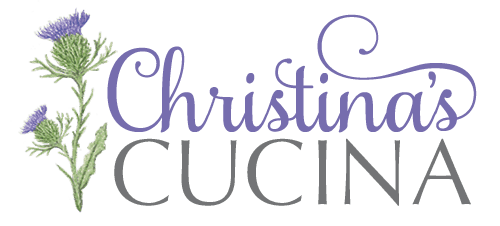
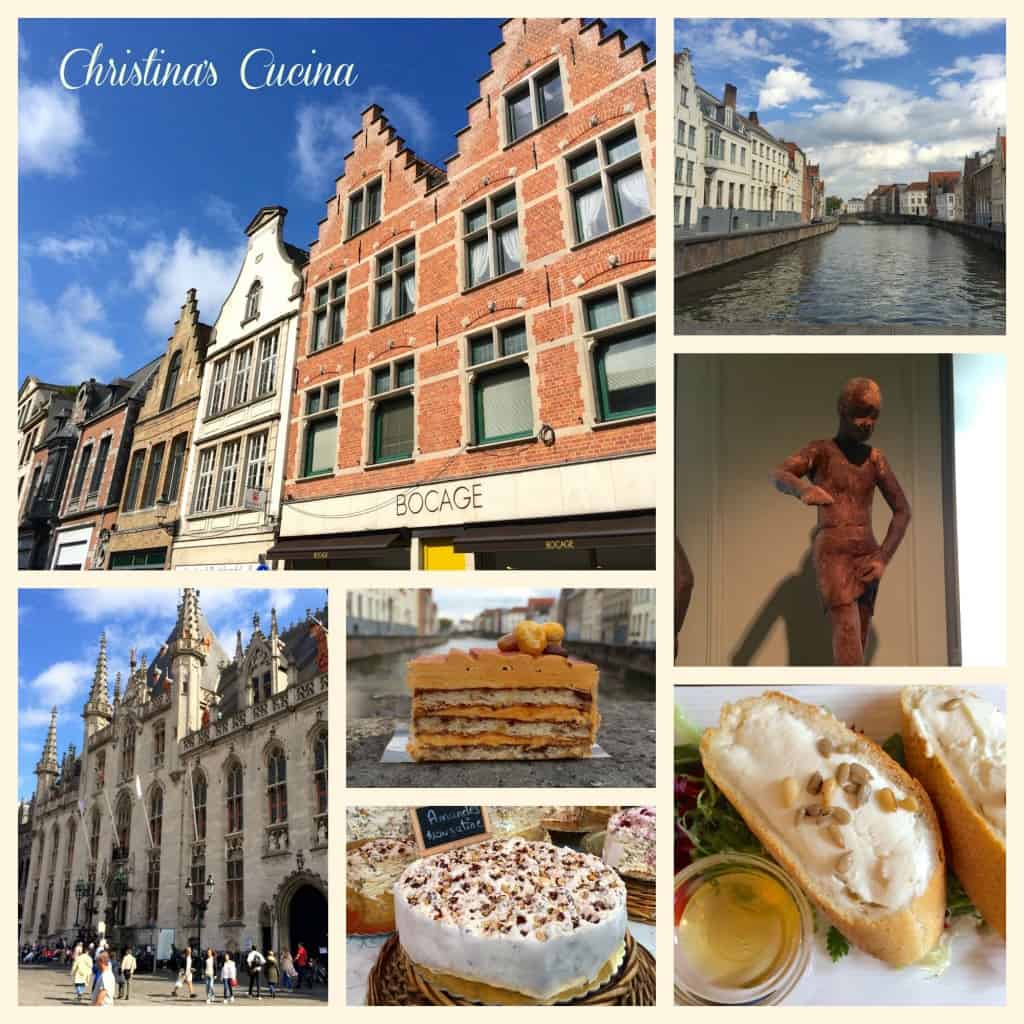
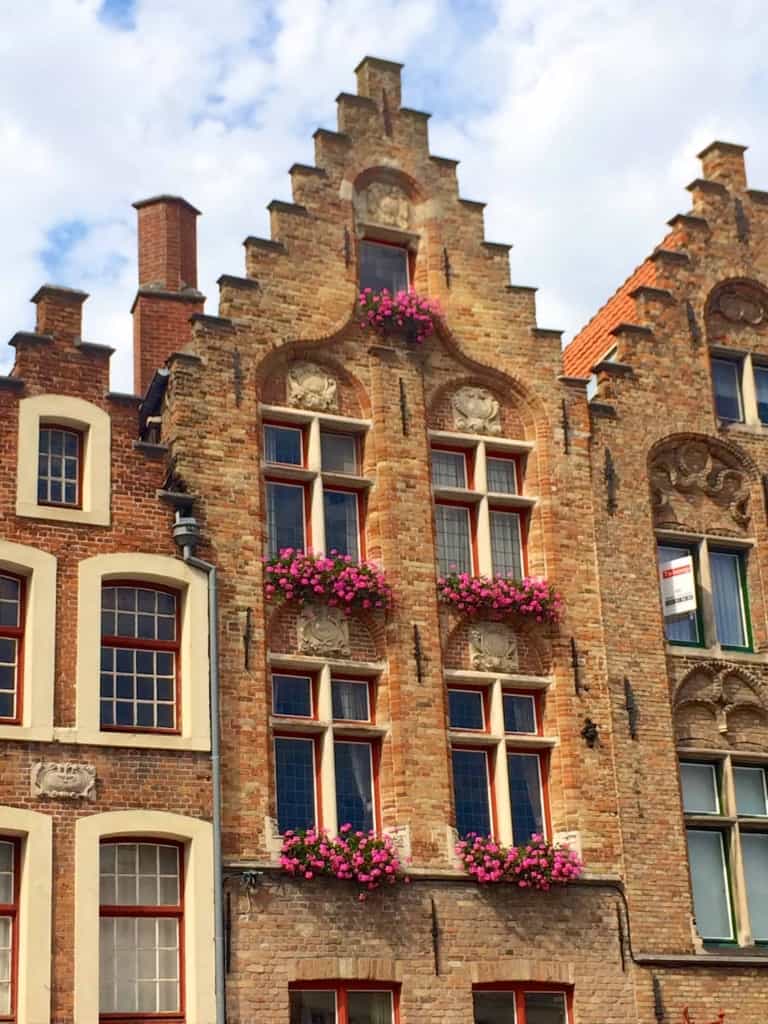

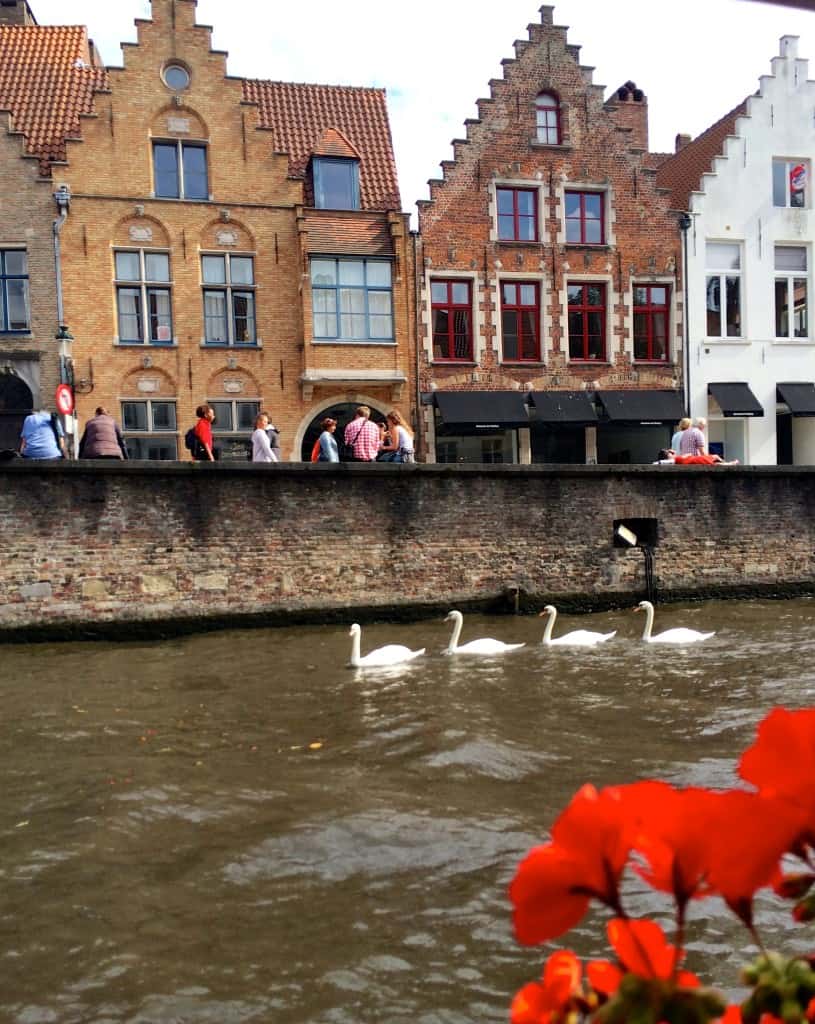
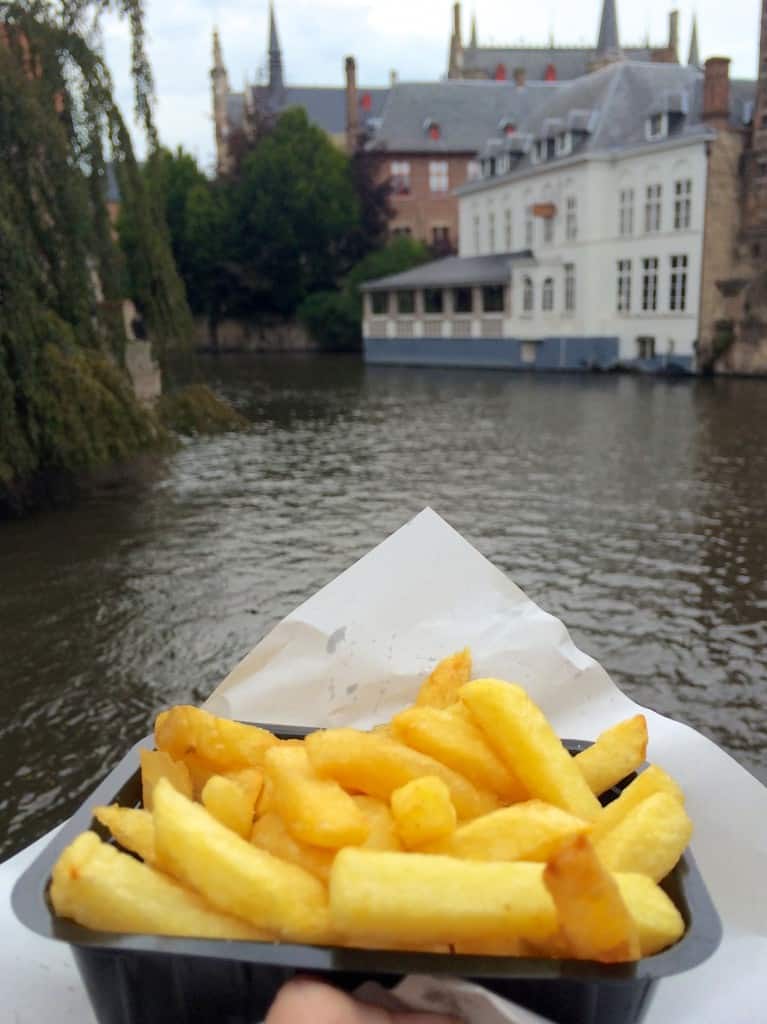
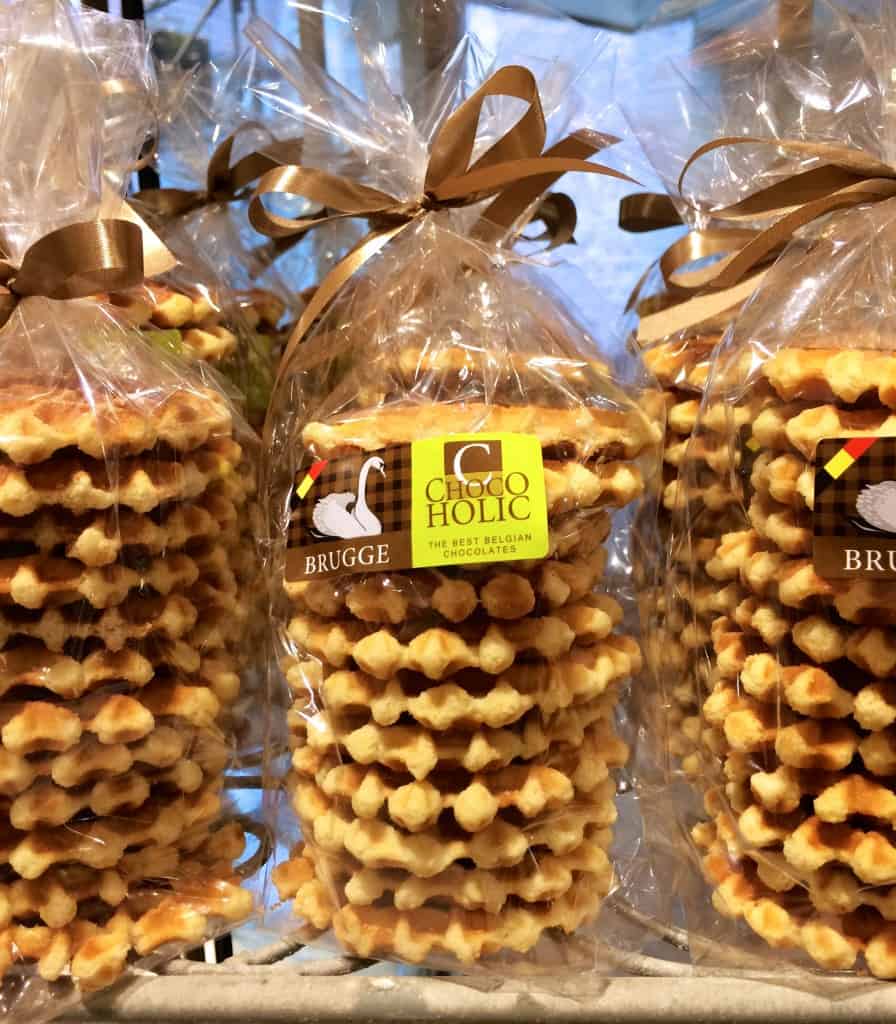
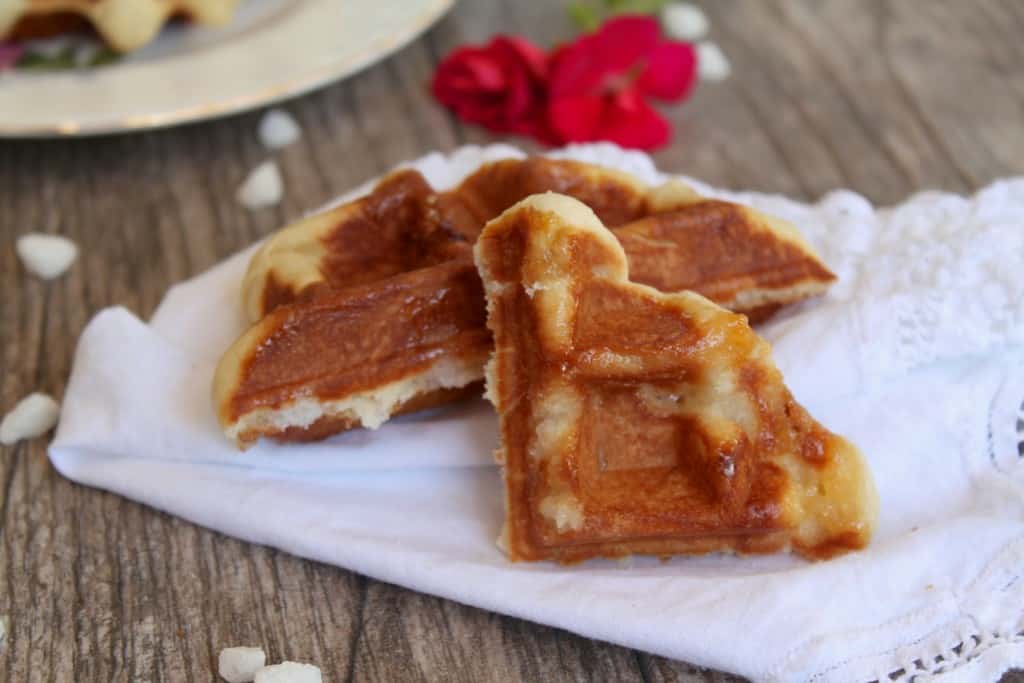
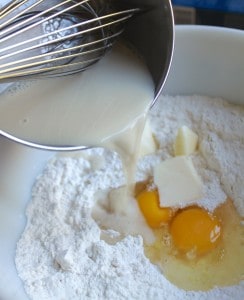
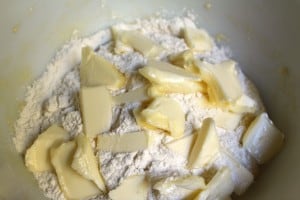
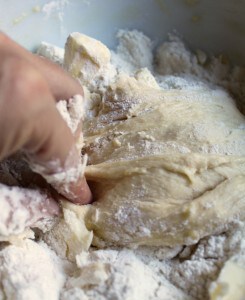
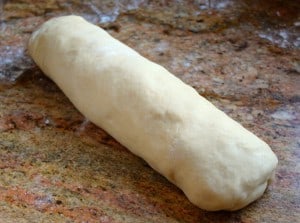
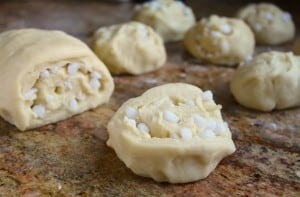
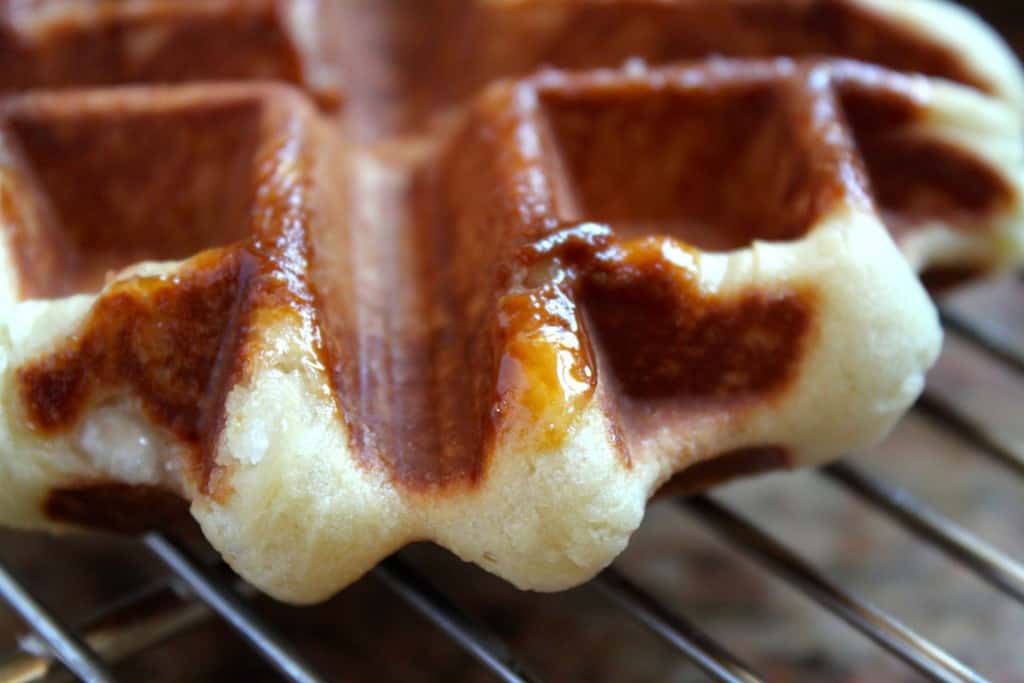
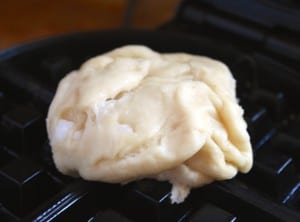
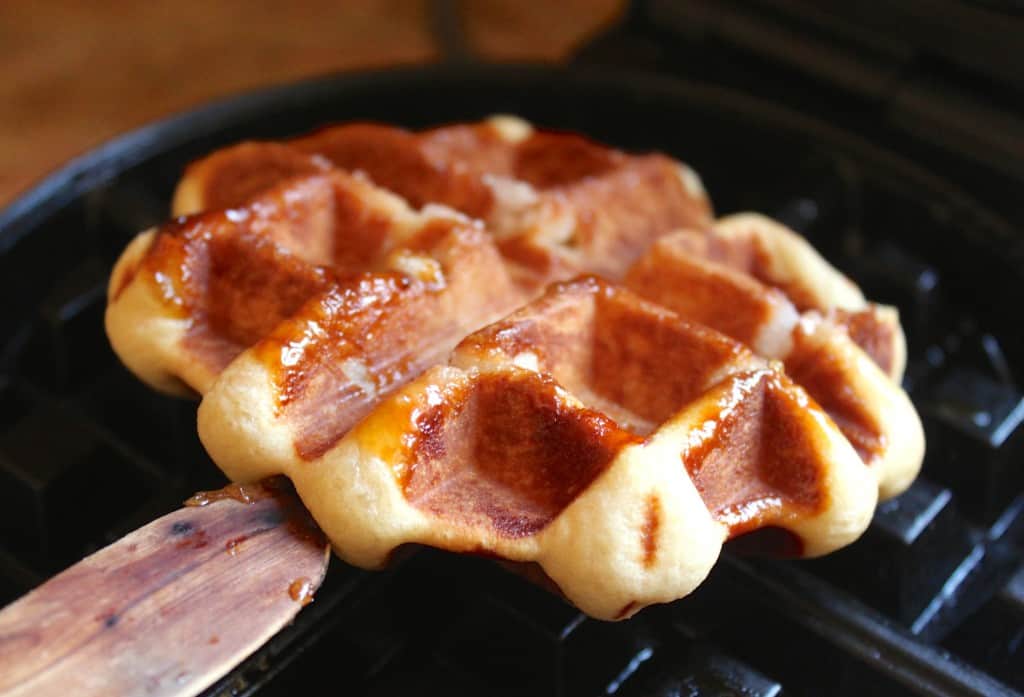
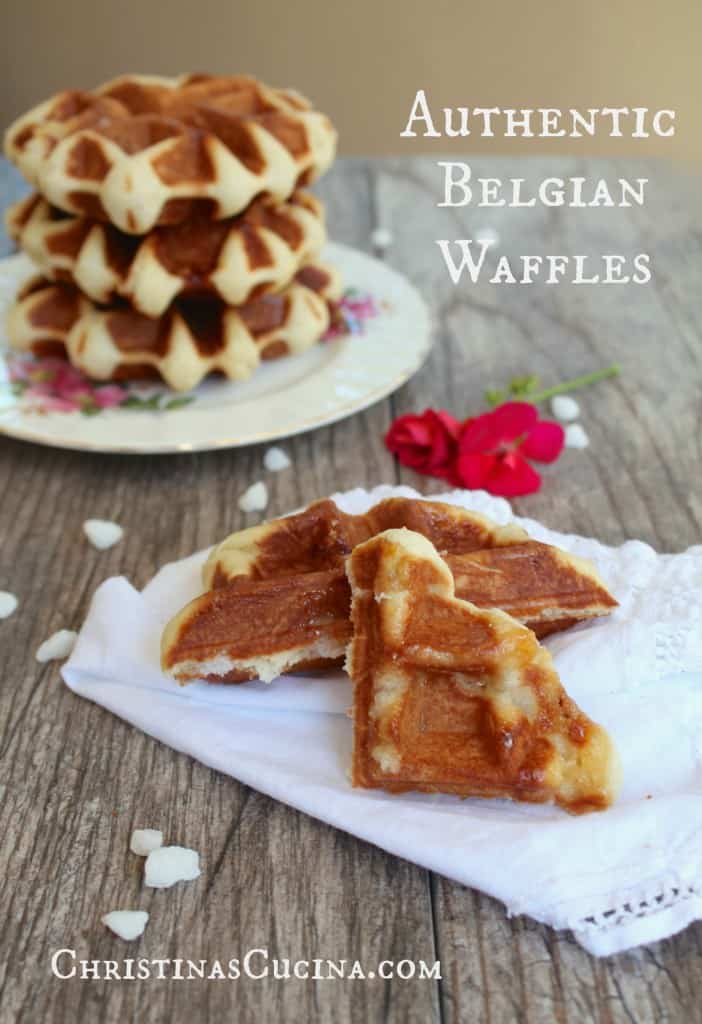
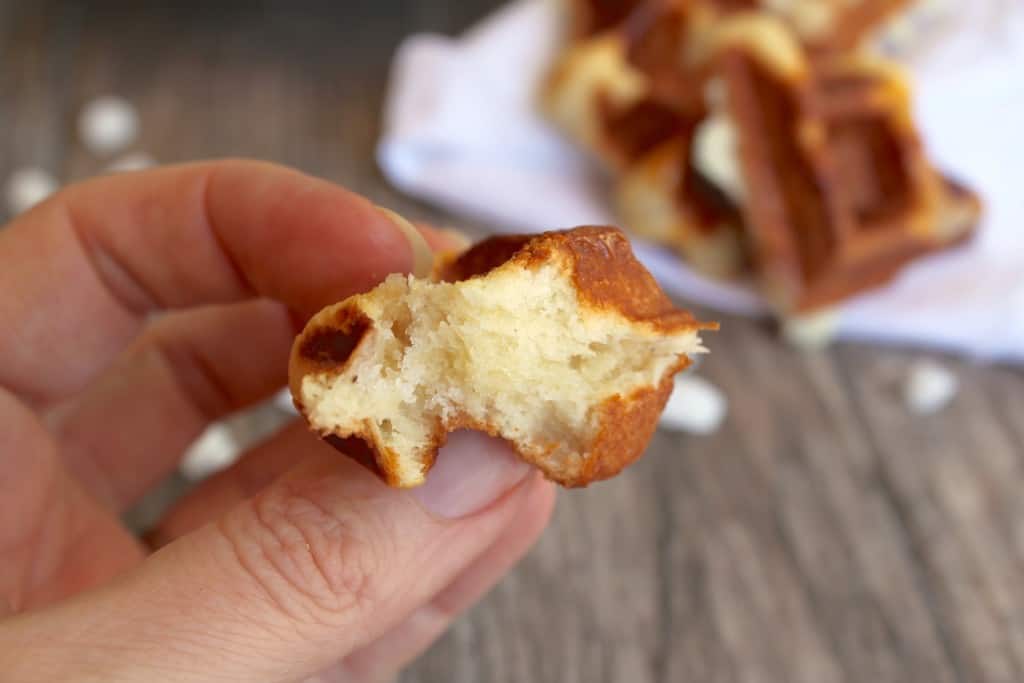
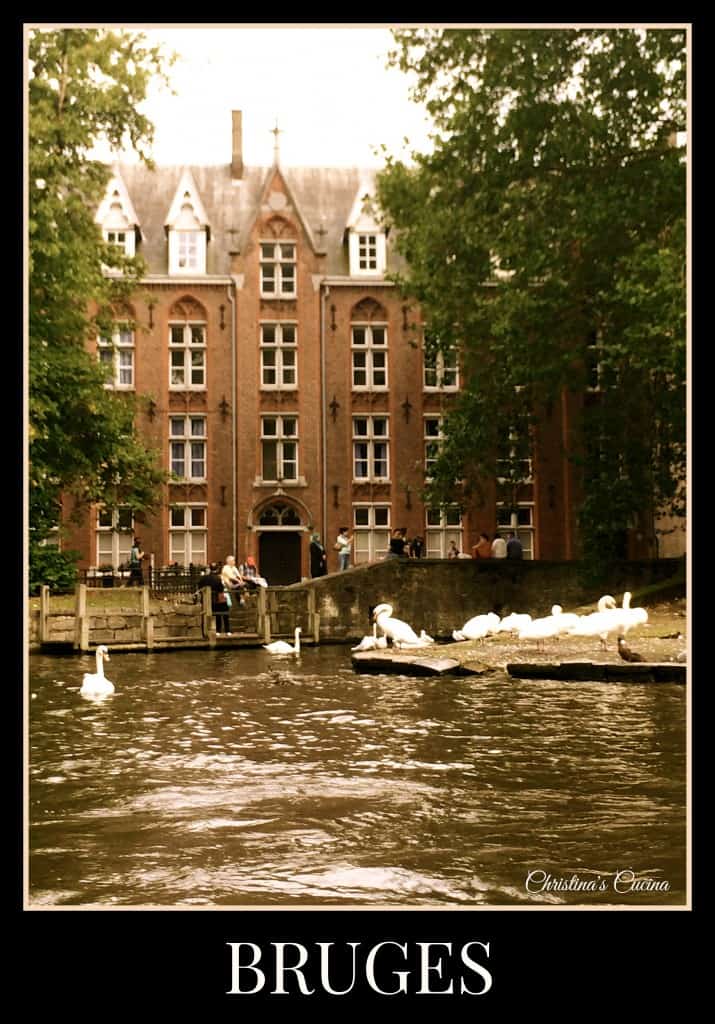
Well everyone is not a great cook with their own authentic recipes. What’s good to you may not be good to others.
Take your time to actually explain to your readers if they have a question to us your the chef we are sous chefs learning a technique from you type onto your BLOG to again us. We’re not searching for coaches just recipes so why would you state “ your not an consultant you should charge a fee if you have to go step by step in the process” you have a very smart mouth that was very disrespectful to someone asking a question regardless if you were having “ a bad day “ or not your a blogger. Now, if you don’t want to help clarify your recipes STOP sharing start a diary of recipes for yourself. Or become the professional blogger you think you are and teach.
Even though you used a fake email, I am publishing your comment because maybe others think I “…have a smart mouth” or was “having a bad day.” The fact is that it is neither of those. What you fail to recognize is that the many questions from Nisreen are not from a reader in her home kitchen, but someone opening a shop to SELL waffles! She’s using my free recipe and wants additional details so she can make money, while I give my time and expertise for FREE? NO, sorry it doesn’t work that way in business.
Look at all the other questions from readers and you’ll see that I answer each one as best I can. I do not do consulting work for businesses and restaurants for free. No one works for free, why should I?
This is one of the most amazing articles I have read so far. Really, it was an awesome article, very interesting to read.
Good day
If i use this waffle as commercial. I have a shop , the problem with me when i put pearl sugar with dough the quantity not used can i put it in refrigerator? And maximum how long ? Then when i want to bake it how long time should I leave it out until it’s getting proofing again?
I try it but I found the pearl sugar melt in dough and not got that crunchy , please need your advice
Thanks
I would say that I should get paid a consulting fee to answer these detailed questions. 🧐 Honestly, trial and error Nisreen.
Hello, I tried this recipe for the first time this past weekend and they came out pretty good but they were a bit flaky. Do you think that is because the butter was too cold?
I have no idea what you mean by flaky? Can you tell me more, Colleen?
I made this the other day and it turned out really well but perhaps by my own error a bit more crunchy and syrupy from the pearl sugar than I anticipated(not necessarily bad things but it was also more sweet than I would prefer). I eyeballed the pearl sugar and may have used a bit too much. Next time I’ll be sure to actually measure out the sugar and use slightly less than the recipe to suit my sweetness level, add half a pinch of salt(I used unsalted butter) and some vanilla, and reduce the butter by about 15%(for taste, not that it was greasy or anything).
What I really like about this recipe, and why I chose it over others, is that you don’t need to use a mixer nor proof it for very long. One of the reasons why I haven’t attempted Liege waffles before was because of how daunting the kneading(I don’t have a mixer) and long proofing time was, but this recipe seems to prove otherwise. I did proof for a bit longer to account for chilly weather and left it to slow ferment in the fridge overnight before cooking though.
I also made my own pearl sugar which cuts a lot of the cost and was indistinguishable from the real thing(at least from what I can tell of pictures since I don’t have the real thing to reference), so for anyone reading that doesn’t have easy access to pearl sugar, this is what I did:
– grind white sugar to a powder(I have a crappy blender and no food processor so I use a clean spice mill and shake the sugar around as it grinds and do several small batches) and put it into a microwaveable mixing bowl
– spritz small amounts of water onto the sugar powder and stir evenly, repeating until the sugar is barely moist but clumps together like brown sugar)
– loosely cover and microwave on HIGH in 30 second intervals, stirring with a silicone spatula in between. I did this about 3-4 times until the sugar started to melt a bit and bubble but was otherwise still grainy and not caramelized. This causes the sugar harden into one piece when cooled.
– at this point the sugar should be a flowing mass that can be poured out with the help of a spatula onto parchment or a silicone mat.
– while the sugar is hot. take something wide, flat and preferably nonstick like a spatula or plastic dough scrapper to press on and flatten out the sugar mass until it’s the appropriate thickness. *Caution that the sugar will be very hot so don’t touch with bare hands* Alternatively you can put some parchment on top and try to roll it flat.
– leave uncovered to cool completely. Now you can smash the sugar into “pearl” size. (personally I would aim for smaller than Belgian pearl sugar but a bit bigger than Swedish pearl sugar). Any resulting sugar “dust” can be collected to be used elsewhere.
If you did it well you’ll have lumps of compacted sugar that’s even harder than sugar cubes that will hold up to being folded into dough and produce a nice “crunch” in the waffle.
Unsalted butter + 1/2 tsp salt ?
Flour =
AP flour or
Bread flour (400g) + Cake flour (100g) ?
Hi Sulley, I’m assuming you’re confused. This is a recipe that was given to me from my cousin and it is for authentic Liege waffles. If you read the recipe (past the ingredients) I think it might be clearer for you. There is no added 1/2 tsp of salt and the flour is just all purpose/plain. The flour is used at different parts of the recipe, which is the reason for the separate measurements. Enjoy, CC
hi Christina,
thanks for the prompt response, there was no detail in the recipe.
I don’t have salted butter so I’d like to add 1/2 tsp of Kosher salt.
also I don’t have AP flour now, so I just want to try to mix those Bread and Cake (500g) flour before start it.
do you think it’s ok?
Oh now I understand! I misinterpreted your ? Add 1/4 tsp salt and I think the flours should work since it’s a yeast dough. Let me know how it goes! :)